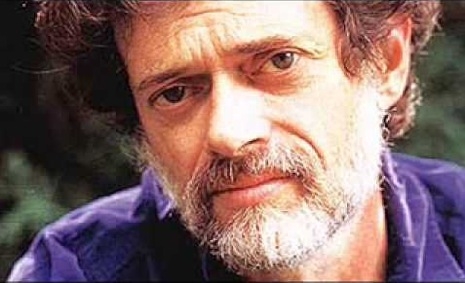
Nina Hagen on the cover of MONDO 2000 magazine
In the late 1980s into the early 90s, for me, and for a lot of people, a new issue of the sporadically published cyberculture magazine MONDO 2000 appearing on newsstands was… a big event. There was nothing else like it and I’d pore over each issue, reading it from cover to cover. Then I’d read it again. It came out on a very irregular schedule, but I always seemed to have a sixth sense about a new issue coming out—or maybe I just really haunted bookstores more then than I do now—in any case, I doubt that an issue was ever on the stands for more than 24 hours before I held a copy in my hands.
I discovered a lot of great stuff via MONDO 2000 and was exposed to a lot of new ideas (hacking at a time when a fax machine was still a novelty), new technologies (virtual reality) and even new drugs (Piracetam, I’m looking at you, kid), but I think the strongest attraction that MONDO 2000 had on the imaginations of so many people was that it seemed to indicate that an entirely NEW counterculture was being born. It was like a William Gibson novel had sprung to life. It was the best thing since post-punk.
Some of the elders of the 60s (like Tim Leary) became fellow travelers of the MONDO 2000 crew—which was led by two cheerfully druggy, but terribly smart, hedonistic pied-pipers by the names of R.U. Sirius (AKA Ken Goffman) and Queen Mu (AKA Alison Kennedy). Clued-in younger people, too, seeking a “scene” for themselves gravitated towards San Francisco to check out in-person what they’d been reading about in the magazine. bOING bOING’s David Pescovitz, for instance, once told me that he ended up in SF as a very direct result of MONDO 2000 magazine.
If you look back at who appeared between the covers of MONDO 2000, whether as subjects, or as writers, you’re talking about the likes of William Gibson, Robert Anton Wilson, the anonymous psychedelic adventurers “Gracie and Zarkov,” Mark Frauenfelder, Grant Morrison, Douglas Rushkoff, Debbie Harry, Nine Inch Nails, John Perry Barlow, “life extension” pioneers Durk Pearson and Sandy Shaw, Rudy Rucker, Negativland, Bruce Sterling, Diamanda Galas, “Xandor Korzybski,” the conspiracy theorist/ranter, cultural critic Mark Dery, Nina Hagen, and Mark Pesce. That’s a heady crew, but the list goes on and on.
R.U. Sirius’ upcoming book, Use Your Hallucinations: MONDO 2000 in Late 20th Century Cyberculture, is the story of the magazine—half personal memoir, half scrapbook from the MONDO archives and oral history from the participants. An excerpt recently appeared on the Omni Reboot website:
William Gibson: MONDO was arguably the representative underground magazine of its pre-Web day. It was completely outside what commercial magazines were assumed to be about, but there it was, beside the commercial magazines. I was glad it was there. And then, winding up on the cover of Time —what does that do? How alternative is something that makes the cover of Time? Could MONDO even happen today?
Douglas Rushkoff: The idea of having a scene, a place…Oddly enough, MONDO was the last scene of the last era. It’s the last sort of Algonquin group or whatever. I mean, physical reality isn’t what it used to be. Now you create a Facebook group to do what MONDO did.
The first time I met Grant Morrison, the topic turned to MONDO 2000 and he told me that it was, to him, the single most important piece of press he’d gotten to that point. I felt the same way. When Disinformation debuted online in September of 1996 (btw, the 17th anniversary of that launch was—gulp—yesterday) and MONDO 2000 wanted to cover it, like Grant, I was thrilled. I was similarly tickled to be depicted in the pages of the magazine with three heads in a wild two-page spread illustrated by artist Omaha Perez. A young Reese Witherspoon was on the cover.
During one visit to San Francisco, I got to visit “the MONDO house” a large mansion in the Berkeley Hills rented by Alison Kennedy where she lived and where the mag was put together. She was an interesting character, a strikingly beautiful older woman, charming, literate and obviously brilliant. Kennedy is an heiress who put her inheritance into the building the magazine. She walked with me up the hill to show me a home that Timothy Leary had once occupied and pointed out a garage that Leary had built himself and then she made an absolutely fabulous meal, telling me a great story about Aldous Huxley as she cooked. I was very impressed by her, but I had been warned by more than one person that she was quite eccentric, and by the time it was starting to get dark, she was saying some incredibly paranoid, kooky things and it got a little bit awkward.
If you want to read a great piece of journalism about what it was really like around the MONDO 2000 orbit, Jack Boulware’s classic SF WEEKLY article, “MONDO 1995: Up and Down With the Next Millennium’s First Magazine” is a must-read (R.U. calls it “mostly true.”) You can find out more about R.U. Sirius’s MONDO project here.








